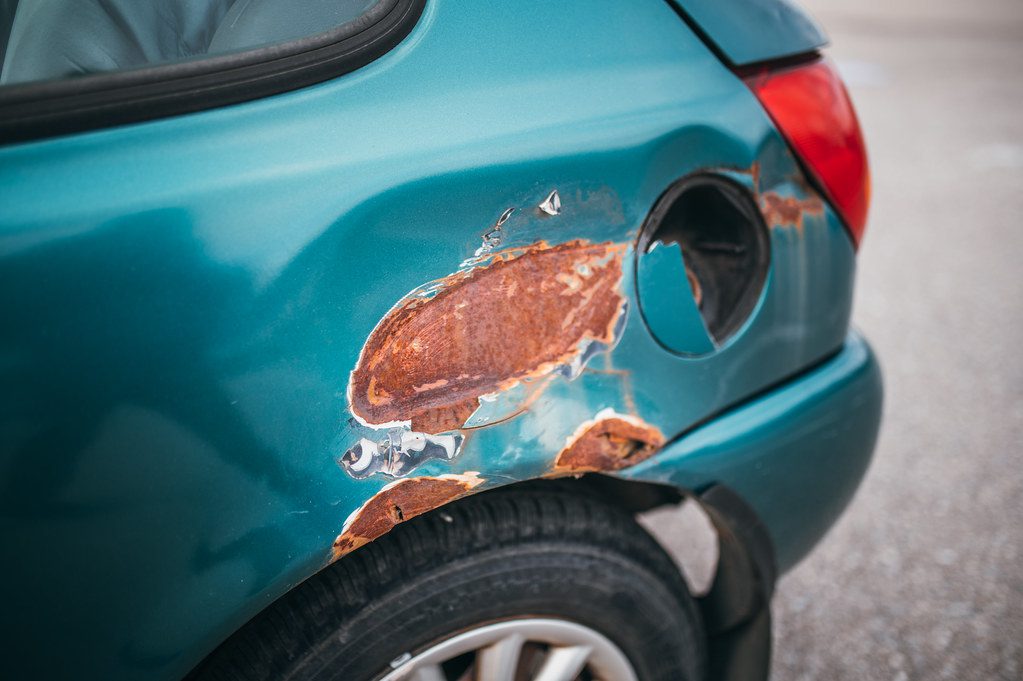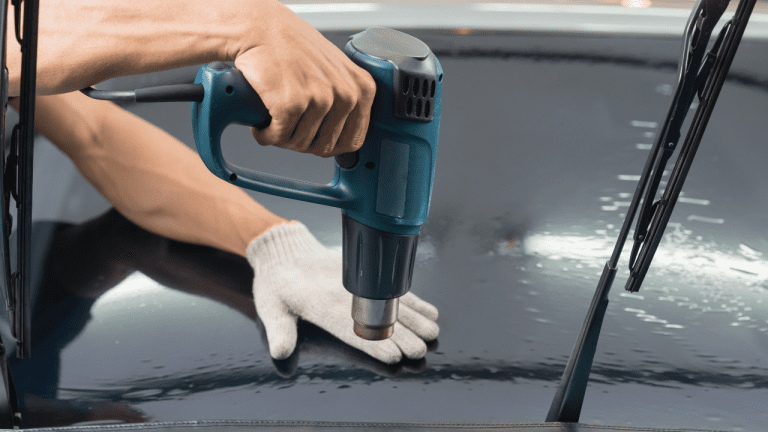Will Acetone Damage Car Paint? (How To Use It Safely)
Maintaining the pristine appearance of a car’s paintwork is a priority for many vehicle owners. However, when it comes to removing stubborn paint stains or adhesives, the use of acetone as a solvent often sparks concern. The question arises: Will acetone damage car paint?
In this article, we delve into the topic to debunk common myths and provide essential guidelines for the safe use of acetone on car paint. Understanding the properties of acetone and its potential impact on automotive finishes is crucial for making informed decisions.
While acetone is a potent solvent known for its ability to remove paint, it is important to dispel the misconception that it inevitably leads to paint damage. Factors such as the quality and condition of the car’s paint, the concentration and duration of acetone exposure, and proper application techniques play significant roles in determining the outcome.
By exploring the science behind acetone and car paint interactions, we aim to provide clarity and empower car owners with practical advice for effectively and safely utilizing acetone when necessary.
Acetone can potentially damage car paint if used improperly or in excessive amounts. However, when used correctly, following proper guidelines and precautions, acetone can be safely used for specific purposes such as removing paint stains or adhesives from car surfaces.
Acetone and its Properties
Acetone as a common solvent
Acetone is a volatile organic compound and a widely used solvent. It is a colorless liquid with a distinct odor and is highly miscible in water. Its solvent properties make it effective for dissolving a wide range of substances, including paints, adhesives, and oils.
Effectiveness in removing paint and other substances
Acetone is known for its ability to effectively remove paint from surfaces. Its strong solvency power allows it to break down paint molecules, making it a popular choice for paint stripping and cleaning tasks. It can also remove adhesives, grease, and other contaminants from various surfaces.
Chemical composition and potential risks associated with acetone
Chemically, acetone is a simple organic compound with the formula C₃H₆O. It is a highly volatile substance with a low boiling point, making it evaporate quickly. While acetone is generally safe to use, prolonged or excessive exposure can have potential risks. These include skin and eye irritation, respiratory issues, and flammability. It is important to use acetone in well-ventilated areas, avoid direct contact with skin and eyes, and follow proper safety precautions when handling it.
Debunking the Myth: Acetone and Car Paint
There is a common misconception that acetone will instantly damage car paint upon contact. However, it is important to dispel this myth and understand the actual impact of acetone on car paint. Here are some key points to consider:
1. Differentiating acetone from paint thinners
Acetone is often confused with paint thinners, which can be more aggressive and potentially harm car paint. Acetone, on the other hand, is generally less harsh and can be used safely if proper guidelines are followed.
2. Effect on different types of car paint and finishes
The effect of acetone on car paint can vary depending on factors such as the type of paint and finish. Acetone may have different outcomes on single-stage paint, clear coat, or matte finishes. It is essential to test acetone on a small, inconspicuous area of the car’s surface before applying it more extensively.
3. Proper application techniques
Applying acetone properly is crucial to minimize any potential damage. Using a soft cloth or sponge and gentle rubbing motions can help avoid excessive paint removal or surface abrasion. Additionally, it is important to follow manufacturer instructions and recommended dilution ratios for safe application.
4. Time and concentration of exposure
The duration and concentration of acetone exposure also play a role in its impact on car paint. Limiting the exposure time and using a properly diluted solution can help mitigate any potential risks.
5. Professional assistance
If unsure about using acetone on car paint or dealing with stubborn stains, seeking professional assistance from experienced auto detailers or paint restoration specialists is recommended. They possess the expertise and tools to safely address paint-related concerns.
Factors Influencing the Impact of Acetone on Car Paint
The impact of acetone on car paint can vary depending on several factors. It is important to consider these factors to understand and mitigate any potential risks. Here are key factors that influence the impact of acetone on car paint:
Paint Quality and Condition
The quality and condition of the car’s paint play a significant role in its resistance to acetone. High-quality, well-maintained paint coatings are generally more resilient and less likely to be affected by acetone. On the other hand, older or compromised paint finishes may be more susceptible to damage.
Type of Paint and Finish
Different types of car paint and finishes react differently to acetone. Clear coats, single-stage paints, and matte finishes can have varying levels of sensitivity. It is crucial to understand the specific characteristics and requirements of the paint on your car to determine how it may respond to acetone.
Concentration of Acetone
The concentration of acetone used can influence its impact on car paint. Higher concentrations may have a more aggressive effect, potentially leading to paint damage. Diluting acetone according to manufacturer instructions or using automotive-specific products can help minimize risks.
Duration of Acetone Exposure
The duration of acetone exposure to car paint is another crucial factor. Prolonged exposure can increase the likelihood of damage. It is advisable to limit the contact time between acetone and the paint surface, and promptly rinse or remove any residual acetone after use.
Application Techniques
The way acetone is applied can also affect its impact on car paint. Using a soft cloth or sponge for gentle application helps prevent excessive rubbing or scraping that could damage the paint. Proper techniques, such as applying acetone in a controlled manner, can help minimize the risks associated with its use.
Precautions and Testing
Taking precautions and conducting a small test in an inconspicuous area before using acetone on a larger surface is advisable. This allows you to assess the reaction and potential impact on the car’s paint. If any adverse effects are observed, it is recommended to discontinue its use and seek professional advice.
Guidelines for Safe Use of Acetone on Car Paint
When using acetone on car paint, it is important to follow proper guidelines and precautions to ensure the safety of both the paint surface and yourself. Here are essential guidelines to consider:
Test on a Small Area:
Before applying acetone to a larger surface, test it on a small, inconspicuous area of the car’s paint. This allows you to assess any potential adverse reactions or damage. If negative effects are observed, discontinue its use immediately.
Use Proper Safety Measures:
Acetone is a volatile substance and can be harmful if mishandled. Use acetone in a well-ventilated area to minimize exposure to its fumes. It is also important to wear protective gloves and safety goggles to protect your skin and eyes.
Dilute Acetone (if necessary):
Depending on the specific task, acetone may need to be diluted. Follow the manufacturer’s instructions or recommended dilution ratios provided on the product label. Diluting acetone can help reduce its aggressiveness and potential impact on car paint.
Soft Cloth or Sponge Application:
Apply acetone to the car’s paint using a soft cloth or sponge. Avoid using abrasive materials or harsh scrubbing motions that can cause damage. Gently rub the affected area, being careful not to apply excessive pressure.
Promptly Rinse and Dry:
After using acetone, rinse the treated area with clean water to remove any residual acetone. Ensure that no acetone remains on the surface, as it can continue to react with the paint. After rinsing, dry the area thoroughly with a clean, soft cloth.
Seek Professional Assistance (if needed):
If you are uncertain about using acetone or dealing with challenging paint issues, it is advisable to seek professional assistance from auto detailers or paint restoration specialists. They have the expertise and experience to handle such situations safely and effectively.
Alternatives to Acetone for Paint Removal
While acetone is commonly used for paint removal, there are alternative methods and products available that can effectively remove paint from car surfaces. Here are some alternatives to consider:
Automotive Paint Removers
Automotive-specific paint removers are formulated to safely and effectively remove paint from car surfaces. These products are designed to be less aggressive than acetone and are often available in gel or paste form. Follow the manufacturer’s instructions for proper application and safety precautions.
Heat Gun
A heat gun can be used to soften and loosen paint, making it easier to scrape off. Use the heat gun at a safe distance and be cautious not to overheat the paint, as it can cause damage. After heating the paint, gently scrape it off using a plastic scraper or a putty knife.
Sanding
Sanding is a method commonly used for removing paint from car surfaces. It involves using sandpaper or a sanding block to gradually sand away the paint layers. Start with a coarse-grit sandpaper and progress to finer grits for a smoother finish. Remember to be careful not to sand too aggressively, as it can damage the underlying surface.
Chemical Paint Strippers
Chemical paint strippers are another option for removing paint from car surfaces. These products work by chemically breaking down the paint layers. It is essential to select a paint stripper specifically designed for automotive use and follow the instructions carefully. Be aware that some chemical strippers may still contain strong solvents, so proper safety precautions should be taken.
Seek Professional Assistance
If you are unsure about using alternative paint removal methods or dealing with complex paint issues, it is advisable to seek professional assistance. Professional auto detailers or paint restoration specialists have the expertise, tools, and knowledge to safely and effectively remove paint without causing damage to your car’s surface.
FAQ:
Q: Will acetone damage the paint on my car?
A: Acetone has the potential to damage car paint if used improperly or in excessive amounts. However, when used correctly and with proper precautions, acetone can be safely used for specific purposes without causing harm to the paint. Factors such as the quality and condition of the car’s paint, the concentration of acetone used, and the duration of exposure play significant roles in determining the impact on car paint.
Q: Can I use acetone to remove paint stains from my car without damaging the paint?
A: Yes, acetone can be used to remove paint stains from car surfaces when used properly. Start by applying a small amount of acetone to a soft cloth and gently rub the stained area. Avoid excessive pressure or vigorous scrubbing, as it may damage the paint. After removing the stain, rinse the area with water and dry it thoroughly. Remember to follow the recommended precautions and guidelines to minimize the risk of paint damage.
Q: Are there any alternative methods for removing paint from my car?
A: Yes, there are alternative methods for paint removal from car surfaces. These include using automotive paint removers, heat guns, sanding, or chemical paint strippers. Each method has its own advantages and considerations, so it is important to choose the method that suits your specific needs and follow the instructions carefully. Seeking professional assistance is also a viable option if you are unsure about the best approach for your particular paint removal task.
- Protecting Your Truck Bed: A Guide To Truck Bed Covers - July 14, 2025
- Finding The Right 88-98 Chevy Truck Bed Cover - July 14, 2025
- Finding The Right 88-98 Chevy Truck Bed Cover - July 14, 2025





